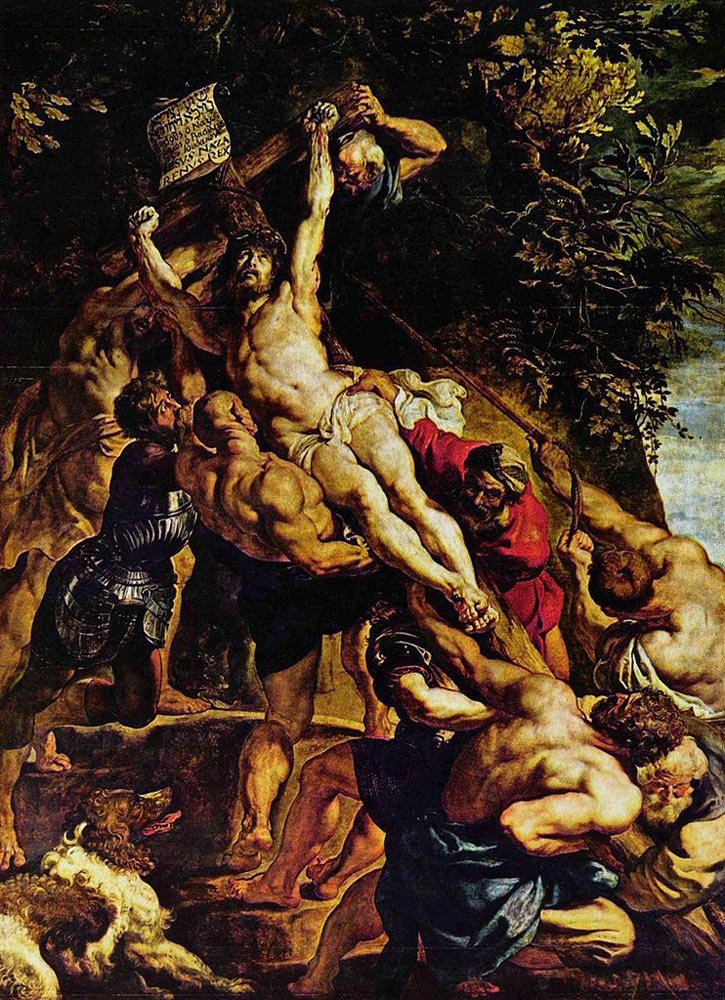| The Raising of the Cross | |
|---|---|
 |
|
| Artist | Peter Paul Rubens |
| Year | 1610–11 |
| Medium | Oil on canvas |
| Location | Cathedral of Our Lady, Antwerp |
| Dimensions | 182 in × 134 in |
| 462 cm × 341 cm | |
| Famous Paintings by Peter P. Rubens | |
| Samson and Delilah | |
| The Descent from the Cross | |
| Prometheus Bound | |
| The Raising of the Cross | |
| Adoration of the Magi | |
| Consequences of War | |
| Complete Works |
The Raising of the Cross, sometimes referred to as The Elevation of the Cross, is a painting dating from around 1610 by Peter Paul Rubens. The painting is a large triptych (done in three panels) work in oil on canvas, measuring 182 by 134 inches.
Rubens painted the work for St. Walpurgis church in Antwerp, but the work now resides in Antwerp’s Cathedral of Our Lady. Whereas most triptychs of the time portrayed three different aspects of a story in each panel, the panels in The Raising of the Cross deals with a single story.
Style and Composition
The painting is done in Baroque style. Rubens completed the painting after he had returned to his native Flanders following several years studying in Italy. The painting clearly shows the influence of Michelangelo’s works on the artist.
The center panel depicts muscular characters raising the cross, to which Jesus has been nailed. The left panel shows onlookers, including Mary. The right panel shows Roman soldiers manhandling the two thieves who were crucified with Jesus.